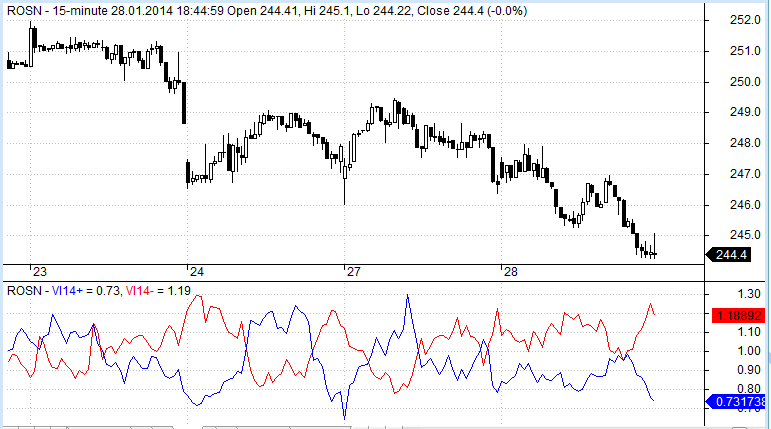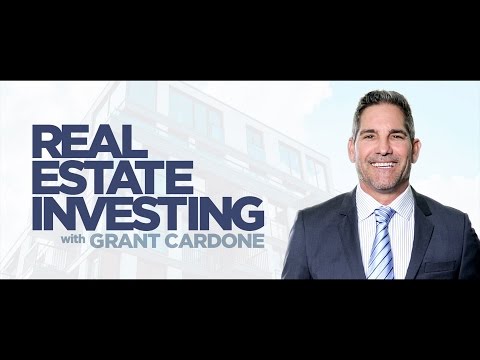Contents:


You may use the Sharpe ratio to identify whether the new fund which you want to add to your existing portfolio would be beneficial or not. Ideally, the addition of an extra fund should increase the Sharpe ratio by lowering the overall risk and boosting the returns. On the contrary, if the Sharpe ratio drops to 1.05, then it indicates that you need to revisit the decision of diversification, i.e. adding that fund to the existing portfolio. Sharpe ratio was derived in 1966 by William Sharpe; it is very simple and uses only three inputs namely asset return, risk-free return and standard deviation of return. This simplicity has been its biggest advantage and the reason for its popularity.

It is used to measure the dispersion of the actual return from the mutual fund’s expected return. The Sharpe Ratio formula takes the denominator’s standard deviation of mutual fund returns to achieve its value. The Sharpe Ratio can be used by investors as a technique for assessing the need for diversification of portfolios. If an investor is investing in a 2.00 Sharpe Ratio fund, it would help to reduce the ratio and risk factor by adding another fund to his portfolio. Standard deviation takes into account both the positive as well as the negative deviation in returns from the mean, hence it doesn’t accurately measure the downside risk.
Advantages and disadvantages of the Sharpe ratio
This ends in a Sharpe ratio of 5.four [(23.6% – 1.25%) / 4.2%] which is in the 98th percentile over the past 25 years. This means that solely 2% of the time has the Sharpe Ratio been larger than it is at present. Anything is possible going forward however our counsel to traders would be to expect lower Sharpe ratios due to lower returns, larger volatility, or both.
We assume that the asset is one thing like a big-cap U.S. fairness fund which might logically be benchmarked towards the S&P 500. Similarly, promoting very low-strike put options might appear to have a very high Sharpe ratios over the time-span of even years, as a result of low-strike puts act like insurance coverage. Based on these calculations, manager B was in a position to generate a higher return on a risk-adjusted basis.
Note that both standard deviation and the Sharpe ratio are ultimately annualized figures. Click here to learn more about how Morningstar calculates the Sharpe ratio and standard deviation. Squaring off is a trading style used by investors/traders mostly in day trading, in which a trader buys or sells a particular quantity of an asset in the hope of earning a profit. A common limitation of all accounting ratios is that it is backward looking and is based on historical returns.
- One of the most common ratios an individual uses while judging the potential of an equity fund or forex account is the Sharpe ratio since it compares profitability with respect to the risk.
- Here, the market usually refers to the benchmark index the fund follows.
- The modern theory of portfolios states that adding assets to a diversified portfolio with low correlations will reduce portfolio risk without losing return.
- A fund having a higher Sharpe Ratio is considered great because it gives higher returns and higher risk.
- Basically, it is measuring excess return (over risk-free rate) per unit of risk.
Sharpe ratio is an accurate method to evaluate the efficiency of a fund against a unit level of risk. The higher a portfolio’s Sharpe ratio, the greater its risk-adjusted-performance. If you get a negative Sharpe ratio, however, then it implies that you will be safer suited to investing in a risk-free asset than the one you are actually investing in. Additionally, the use of standard deviation in the Sharpe ratio formula imposes its own set of limitations because standard deviation assumes an approximately symmetric return distribution. For funds with asymmetric returns, standard deviation can be a problematic measure of volatility. The Treynor ratio also uses a different denominator compared to the Sharpe ratio.
We know that over many rolls, the most common result from the dice will be 7 and the least common results will be 2 and 12. The greater a portfolio’s Sharpe ratio, the better its risk-adjusted performance. If the analysis results in a negative Sharpe ratio, it either means the risk-free rate is greater than the portfolio’s return, or the portfolio’s return is expected to be negative. In either case, a negative Sharpe ratio does not convey any useful meaning. One of the limitations of the Sharpe ratio is that it is based on standard deviation. But what we need to be mindful of is that the SD takes into account all types of returns of the fund, i.e., both negative and positive deviations from average or mean.
Commodity Mutual Funds – Diversify Your Portfolio with Commodities
When you are looking at the beta of a mutual fund, you are finding out the tendency of your investment’s return to respond to the ups and downs in the market. Here, the market usually refers to the benchmark index the fund follows. Any beta less than 1 denotes lower volatility and higher than 1 denotes more volatility compared to the benchmark index. The investor believes that adding the hedge fund to the portfolio will lower the expected return to 11% for the coming year, but also expects the portfolio’s volatility to drop to 7%.
The Sharpe Ratio does not capture other aspects of risk, such as liquidity risk, credit risk, or market risk, that may affect the performance of the fund. In this blog, we will explain the Sharpe ratio in detail and understand how you can use the ratio to make better investment decisions. Usually, any Sharpe ratio greater than 1.0 is considered acceptable to good by investors. While this kind of security has the least volatility, some argue that the risk-free safety ought to match the period of the comparable investment.

Standard deviation takes under consideration both the positive in addition to the adverse deviation in returns from the mean, therefore it doesn’t accurately measure the downside danger. Measures like Sortino, which only considers unfavorable deviation from the imply return, can take away the limitation of Sharpe ratio to some extent. The Sharpe ratio, nevertheless, is a relative measure of threat-adjusted return. The Sharpe ratio, however, is a relative measure of risk-adjusted return. If considered in isolation, it does not provide much information about the fund’s performance. Moreover, the measure considers standard deviation, which assumes a symmetrical distribution of returns.
A higher Treynor ratio indicates that the risk-return scenario is favorable. One must remember that these Treynor Ratio values depend on past performance which might not happen in the future performance. An investor should look for an investment where the Sharpe ratio is greater than 1. A higher Sharpe ratio offers a better risk-return scenario for an investor. If the Sharpe ratio is negative, it means that either the risk-free rate is higher than the returns of the portfolio, or the portfolio’s return could be negative. In both scenarios, a Sharpe Ratio that is negative is not significant.
Are Your Fund’s Returns Worth the Risk?
It is calculated by dividing the excess returns over the benchmark return with the standard deviation. Developed by the Nobel Prize-winning economist William F. Sharpe, the Sharpe ratio measures the additional returns you can earn from an asset by exposing yourself to its risks. Now, some metrics assess the risk-adjusted return of an asset to analyse whether it is a suitable investment avenue.
What Really Matters? – Oaktree Capital
What Really Matters?.
Posted: Tue, 22 Nov 2022 08:00:00 GMT [source]
The higher the ratio, the better the investment return with respect to the risk taken. You can use the Sharpe ratio to evaluate a stock, mutual fund portfolio, or investment. Sharpe ratio helps measure the potential risk-adjusted returns from a mutual fund or any investment portfolio. Risk-adjusted returns are returns that an investment generates over and above the risk-free return. Sharpe ratio can be used as a tool to compare funds placed in the same category as analysing the performance of Fund A and Fund B, which are large-cap equity funds. In this way, you will ensure that both the funds are facing a similar level of risk.
While Share X had better return than share Y, share Y returned more in terms of one unit of risk it had. In spite of its wide applicability Sharpe ratio has a number of limitations which sometimes leads to a false conclusion. It may be challenging for investors to compute it for each mutual fund scheme.
Since the Sharpe ratio for Fund B is higher than Fund A, Fund B is a better investment option. 2) It considers all the investments to have a normal pattern for the dispersion of returns, but funds may have different dispersion patterns. Suppose, if an investor is invested in a fund with a Sharpe Ratio of 2.00, adding other funds to the portfolio would help reduce ratio and risk factors. With the help of the Sharpe Ratio, investors can use it as a tool to identify the need for portfolio diversification. Funds having a higher standard deviation makes higher returns as their Sharpe Ratio is considered high. However, funds with a low standard deviation can earn High Sharpe Ratio and give consistent moderate returns.
Recent Terms
It helps in comparing different funds which might be giving similar returns but the exposure to risk might be much more in one of them. Sharpe ratio comes very handily to measure the risk-adjusted returns potential of a mutual fund. Generally, risk-adjusted return happens to be the returns earned over and above the returns generated by a risk-free asset like a fixed deposit or a government bond. The excessive returns are viewed in the light of the “extra risk” which an investor takes upon investing in a risky asset like equity funds. The Sortino ratio, simply a modification of the Sharpe ratio, was named after Frank A. Sortinois. Here, the portfolio return is divided by something known as the “Downside Risk” – the negative returns of a portfolio.
Sortino ratio removes the effects of price movements that move upwards.. Instead, it shows you the returns that are lesser than the required return. It comes with an assumption that risk equals volatility which is a very narrow way of looking at all investments. Portfolios with higher rates of risk might have a metric of 1, 2, or 3.
Why Investors Need To Watch TransDigm (NYSE:TDG) – Seeking Alpha
Why Investors Need To Watch TransDigm (NYSE:TDG).
Posted: Thu, 19 May 2022 07:00:00 GMT [source]
The negative sharpe ratio reflects the average return received above the risk-free rate per unit of uncertainty or total risk. When an investment has an asymmetrical return distribution, with either positive or negative skewness, Sharpe ratio is not an appropriate measure of risk adjusted return. It tries to find out the excess return generated by a mutual fund over and above a risk-free rate of return such as an RBI bond or a post-office savings scheme, etc.
Session 15 – Portfolio Management
This will not only give you a better understanding of risk and volatility, but also help you choose a better fund when you are looking at various mutual fund offer documents. Let us take a look at some key tools or ratios that measure this risk. For investors seeking to assess the risk and return trade-off of multiple mutual funds, it may be useful to utilize a metric that enables comparison. The Sharpe Ratio, created by Nobel laureate William F. Sharpe, is one such metric.
Mutual Funds There’s no conflict between Sharpe Ratio and Treynor Ratio – Moneycontrol
Mutual Funds There’s no conflict between Sharpe Ratio and Treynor Ratio.
Posted: Wed, 06 Jul 2022 07:00:00 GMT [source]
A beta of less than 1.0 indicates that the fund NAV will be less volatile than the benchmark index. By computing with above formula, we will get alpha as 0.44 for this fund. The Sharpe Ratio assumes that the returns are normally distributed and that the risk-free rate is constant. Therefore, even if the positive deviations are higher, the SD of the fund could be higher, which may portray the fund to be risky while actually, that may not be the case. The following table shows the Sharpe ratio of different Mutual Fund categories and contains the funds with the highest Sharpe ratio in various categories. Volatility is a measure of the value fluctuations of an asset or portfolio.
This is when the investment’s excess return is zero, which is when the return on the portfolio is precisely equal to the chance-free rate. Though a higher sharpe ratio implies better returns, these are only worth it if the higher returns are not a product of excess additional risk to the investor. The Sharpe ratio calculated using past performance can be compared on a fair basis to expected future performance of the fund.
- Also, you should look at the fund’s standard deviation when comparing the Sharpe ratio.
- Sannihitha Ponaka is an MBA graduate from Symbiosis and has more than 5 years of experience in the financial sector.
- A fund with a higher standard deviation should earn higher returns to keep its Sharpe ratio at higher levels.
- To continue with the example, say that the chance-free rate is 5%, and supervisor A’s portfolio has a regular deviation of eight% while supervisor B’s portfolio has a normal deviation of 5%.
- The Sharpe ratio is the return of a portfolio minus a danger-free rate of return, divided by the portfolio’s standard deviation.
- This determines the excess return for each unit of risk taken by the fund.
This ratio considers only the standard deviation of downside risk instead of the total standard deviation of portfolio returns. Only negative deviation of a portfolio’s return is considered since it gives a better view of risk adjusted portfolio performance. To calculate the Sharpe ratio, subtract the risk-free rate of return from the expected return from a mutual fund. Then divide that difference by the mutual fund portfolio’s standard deviation. At the end of the year, you can use the Sharpe ratio to look at the actual return rather than the predicted return. Sharpe ratio is one of the most powerful tools used in mutual fund selection.
Developed by Terry W. Young in 1991, the Calmar ratio is short for CaliforniaManaged AccountReports. The ratio is very similar to theMAR Ratio, which was formulated much earlier. The only difference is that the MAR Ratio is based on data produced from the inception of the investment, whereas the Calmar ratio is typically based on more recent and shorter-term data.
Measures like Sortino, which only considers negative deviation from the mean return, can remove the limitation of Sharpe ratio to some extent. Measures how well the fund has performed vis-a vis the risk taken by it. It is the excess return over risk-free return divided by the standard deviation. The higher the Sharpe Ratio, the better the fund has performed in proportion to the risk taken by it. The right mutual funds for your long-term goals with inflation-beating growth plus risk management. Suppose a fund is made of only technology stocks and sector performs well.
Furthermore, it helps an investor understand if the excess returns of a portfolio are because of the wise investment decision or because of the high risk. The Sharpe ratio is the return of a portfolio minus a danger-free rate of return, divided by the portfolio’s standard deviation. The ratio helps standardize the returns of managers within the same asset class to allow them to be in contrast on a danger-adjusted foundation. The formulation principally divides returns by the volatility of the returns . The Sharpe ratio is the ratio of the distinction between the imply of portfolio returns and the danger-free price divided by the standard deviation of portfolio returns. In case an investor prefers to calculate it himself, one needs to deduct the risk-free return from the portfolio return, which is defined as the excess return.
However, determining which ratio to use is determined by whether or not the investor needs to focus on complete or commonplace deviation, or simply downside deviation. The Sortino ratio is a useful method for traders, analysts, and portfolio managers to gauge an funding’s return for a given stage of bad threat. Beta is a part of the capital asset pricing model , which is used to calculate the price of equity funding. Investors looking for low-danger investments would possibly gravitate to low beta shares, meaning their costs will not fall as a lot as the general market throughout downturns. However, those self same shares will not rise as much as the general market throughout upswings. By calculating and comparing betas, investors can determine their optimum danger-reward ratio for his or her portfolio.
